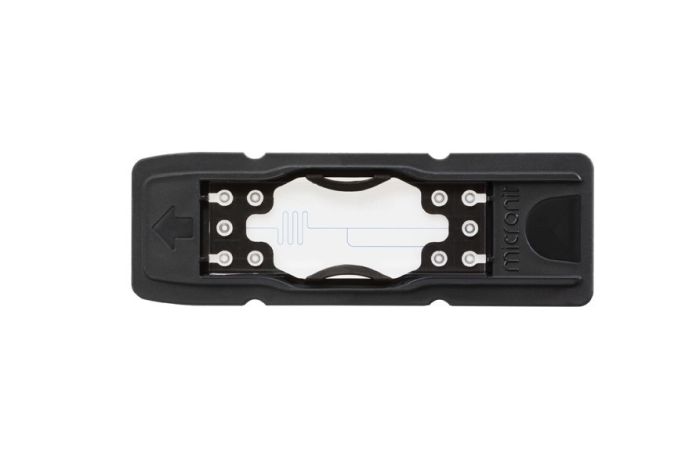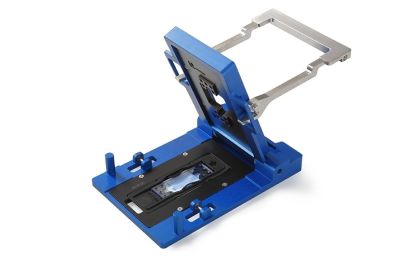shopping_basket
T-shaped droplet generator - uncoated - topconnect
SKU
11002975
Availability:
check_circle In stock
$660.28
per pack of 3
Pack of three uncoated T-shaped droplet generator chips.
Pack of three uncoated T-shaped droplet generator chips, for generating higly reproducible microsized droplets.
Microfluidic droplet generators are excellent tools for generating highly reproducible microsized droplets with much higher precision and repeatability compared to conventional methods.
By tuning the relative viscosities, surface tension, and velocities between the dispersed and the continuous phase, droplets of almost any size can be created.
Oil-in-Water (O/W) droplets can be generated using this uncoated droplet generator.
| Unit of measurement | pack of 3 |
|---|---|
| Coating | No coating (hydrophilic) |
| Interface type | Topconnect |
| Chip material | Borosilicate glass |
| Supply format & dimensions | Supplied in a black polymer cardtridge with an external dimension of 75 x 25mm. |
| Chip thickness | 1800µm |
| Number of inlets | 2 |
| Number of outlets | 1 |
| Fluids | Oil droplets inside a water flow (uncoated, hydrophilic surface) |
| Icon | Label | Description | Type | Size | Download |
|---|---|---|---|---|---|
 | TSDG.2 - T-shaped droplet generator | 67.3 KB | Download |
Customer Questions
We found other products you might like!
- Droplet generation setup - topconnect (no pumps included)
From $2,132.84
To $12,779.65
- Product bundle with interfacing and microfluidic chips
From $2,132.84
To $26,951.83



